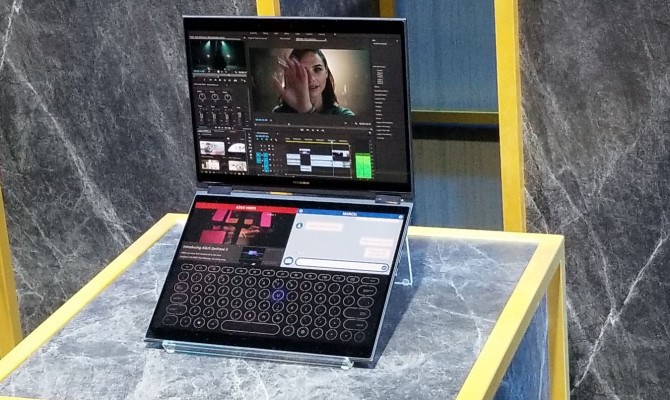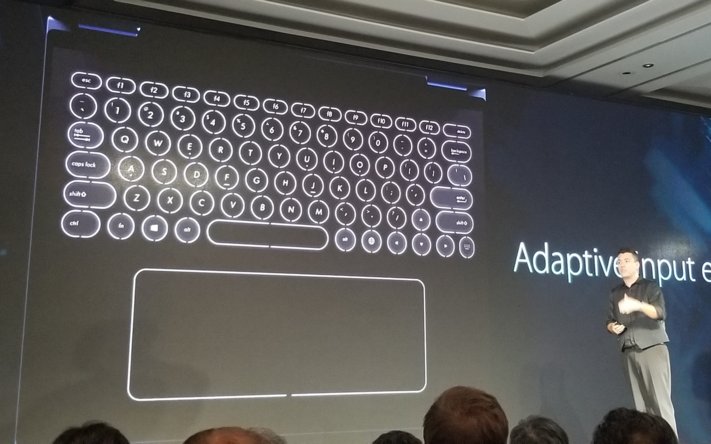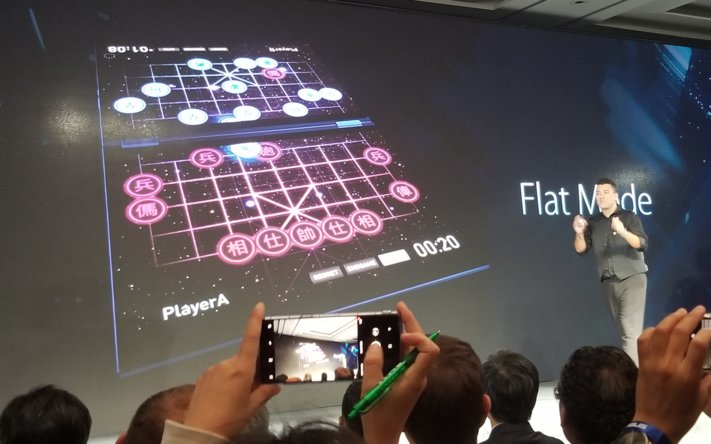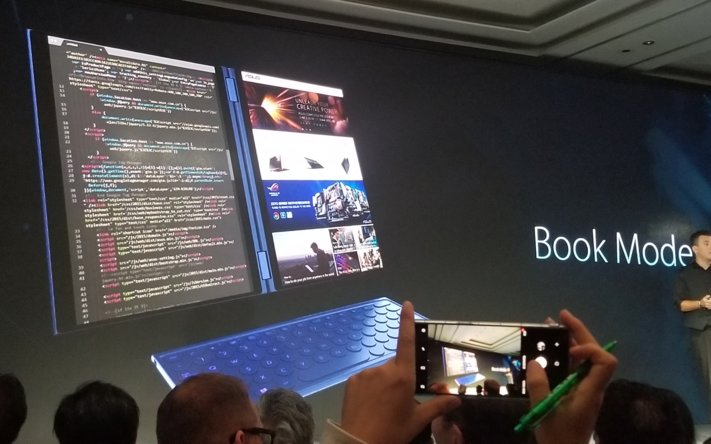Asus Unveils Project Precog, a Dual-Screen Laptop With Built-in A.I.
Dual-screen laptops are the white whale that the tech industry has been trying to slay for a long time. We've seen a number of valiant attempts to make the concept work over the years, from the slide-out second panel on Lenovo's behemoth to ThinkPad W701ds to the clunky Acer Iconia 6120. Asus's Project Precog is different.

A prototype, bendback 2-in-1 that Asus Head of Marketing Marcel Campos showed on stage at Computex 2018, Project Precog uses the power of artificial intelligence and deep software integration to take full advantage of its two, full-size displays. Campos explained that, thanks to an on-board Intel Movidius-powered camera, the system knows exactly where you place your hands and can make a virtual keyboard appear appear right under your fingers.

He showed a series of screenshots, detailing how Project Precog can be used. If you launch an office app like Excel, you can see your spreadsheet on the top screen and Microsoft's chart suggestions on the bottom screen, just above your virtual keyboard. The system also knows that, if you're using it with an external keyboard and move the keyboard away, that you'll need the virtual keys.

It's easy to imagine all of the potential use cases for a dual-screen device, but Asus laid a few examples of its own. It showed how you can do serious work on the top screen while watching videos and chat windows on the bottom one. Because the screens can bend back a full 360 degrees, Campos explained that you can use it like a book with two pages showing in landscape mode or lay it flat on a table and play a game with the person sitting across from you.

Obviously, the lack of a physical keyboard is a big drawback for this device as it was for Acer's Iconia and Lenovo's Yoga Book, which has a Wacom tablet instead of a second screen. If you like typing on a flat surface or want to pair the device with an external keyboard, you won't mind too much.
Details about the hardware were scarce -- the glossy screens appeared to be somewhere between 12 and 14 inches -- and the body appeared to be metal. Asus didn't mention specs because this is a prototype and any final shipping product is likely to change a lot before hitting the market. Still, it's fascinating to imagine the possibilities.
Stay in the know with Laptop Mag
Get our in-depth reviews, helpful tips, great deals, and the biggest news stories delivered to your inbox.

